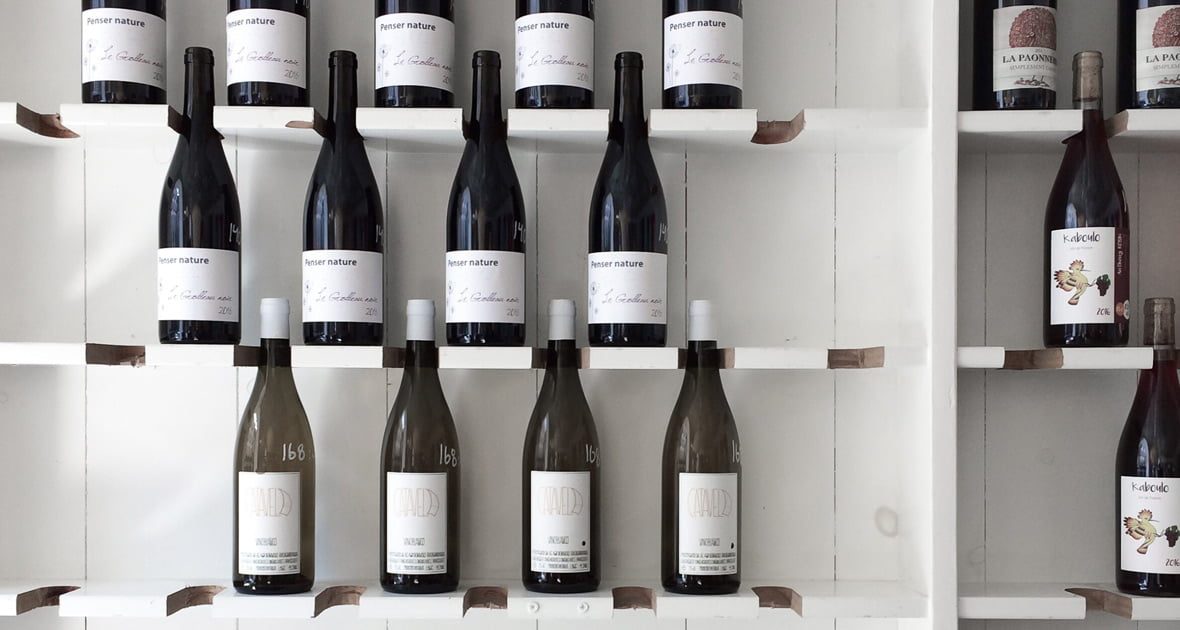Imagine this: you walk into a new wine shop and flag down the first employee you see. You explain to them that you need a couple bottles of wine for your steak dinner with the neighbors tonight. Your wine guide scurries off to a dusty, low-lit aisle and eagerly hands you “one of their favorites.” The label doesn’t look promising—you can only pronounce a couple syllables and aren’t even sure what language it’s in, and there’s definitely no pictures or cool designs on it. But you want to trust your wine expert and you’re also not about to look stupid in front of them, so you take the bottle and head to the checkout counter. Upon opening the bottle with your dinner party, smells come from your glass that remind you of your grandparents’ basement (not in the nostalgic way) and—is that soy sauce you’re tasting, maybe with hints of dirty socks? You feel duped, embarrassed, and there’s a good chance you won’t find yourself in that wine shop again—or at least with that “wine expert”.
I wish I could say this was far from reality, but it happens all too often! And it’s no one’s fault—we just simply miss out on communicating what’s really important to us when we’re buying wine. The breakdown happens most often when we’re looking for a wine to pair with a specific dish or occasion—you know, when you’re hosting a group of people and you sure as heck don’t want to serve a bad wine alongside the meal you’ve worked so hard to create. The stakes are higher, the risks are greater, and the wine can be the most stressful part of the experience.
However, there have been a few key questions that have emerged over time that have completely changed my outlook on how I sell wine. Asking these questions has given me more confidence in matching the “perfect” bottle with the occasion, meal, or event at hand—whether it be with Domino’s pizza, a six-course gourmet dinner, or a quiet night with Netflix and popcorn.
What’s your “norm,” and how important is it?Before you get into specifics about the turmeric or the fresh parsley going into your dish, explain what you usually gravitate towards. What’s your palate like? Do you tend towards bold New Zealand Sauvignon Blancs, or do you like the more subtle flavors of Sancerre? Do you detest sweet wine? Say so! At the end of the day, the most important thing is that you enjoy the wine. If you only drink Cabernet Sauvignon but are serving tilapia, stating your preferences will help your wine guide steer you towards the most appropriate choice for your dish and your palate. Another important piece of information, though, is communicating how important/unimportant sticking to your favorites is. If buttery Chardonnay is your house wine but you’re willing to branch out and try something new to more closely fit the dish or occasion, your wine expert can more easily gauge how “adventurous” to get with your wine selections.
Who are you serving? An equally important question to consider when talking about what you’re serving is who you’re serving. While your monthly wine club may be all about trying Timorasso and Marselan, your boss and his wife probably aren’t the type to venture too far off the beaten path. Besides stating your own preferences for certain grapes, regions or styles, be sure to paint the picture of who else will be enjoying the wine. And while most people are pretty good about stating the need for a bottle of white to go with their steak dinner for that one friend who doesn’t drink red wine, offering a few more details beyond that (if you know them) will make your gathering that much more enjoyable.
What are the details?This is one of my favorite—and most important—questions to ask when settling on a good food-pairing wine. Forget about the main attraction in the dish for a second, and describe the other flavors going into it! Instead of saying “We’re having chicken,” explain that you’re having Mediterranean baked chicken thighs with capers, 15 cloves of garlic, and roasted red peppers. This can turn your wine choice from an “okay” pairing into an eye-poppingly flavorful one. Additionally, if you list a number of spices or flavors that will be featured in your dish, be sure to also mention the flavor that will stand out most so your wine guide can complement the dish in the right way.
What do you want your wine to do? Finally, any additional details about the feel or mood of your gathering is of utmost importance to your wine expert. Sometimes we want the wine to be the star of the show, and other times we want it to be comfortably in the background. Do you want your wine to instigate conversation and make the flavors in your famous braised short ribs recipe shine, or should it play a quiet supporting role to your Cheez-Its and Grey’s Anatomy marathon? The more you can paint the picture of the situation the wine will be in, the closer we can come to matching you with the perfect bottle—whether it’s $8 or $800.
Wherever and whoever you buy your wine from, don’t be afraid to offer this information! It will never not be helpful, and both you and your wine gal (or guy) will walk away more confident and excited about whatever is in the bottle you end up taking home.
Karina Roe
